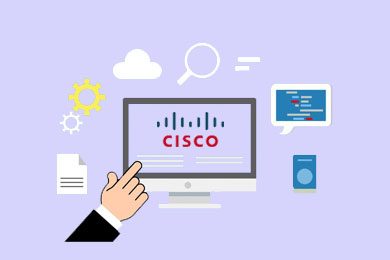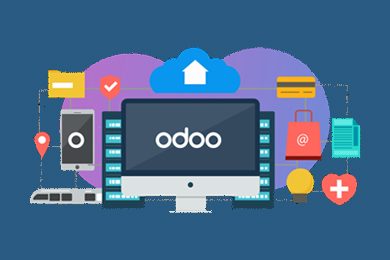This plan includes
- Limited free courses access
- Play & Pause Course Videos
- Video Recorded Lectures
- Learn on Mobile/PC/Tablet
- Quizzes and Real Projects
- Lifetime Course Certificate
- Email & Chat Support
What you'll learn?
- What is ansible, why its needed and how it works
- How to configure ansible and setup static/dynamic inventories
- Managing systems entities using ansible Modules
- Ad hoc server management, running jobs in parallel
- Writing Playbooks to define the state of infrastructure as a code
- Creating modular, reusable code with Roles
- Creating dynmic code with vars and templates
- Using Ansible Galaxy
- Service Discovery and managing Multiple Environments
- Application Deployment Strategies, Rolling Updates
- Encrypting sensitive data with Vault
Course Overview
Pre-requisites
- Basic Linux Operations and CLI
- A laptop or a desktop with a Web Browser
- Docker Envrionment or a Cloud Account
- Terminal software e.g. iterm, bash, conemu
Target Audience
- A Systems Administrator who manages machines at scale
- A Sysops/Operations Engineer who would like to automate application installation and configurations
- A Devops Engineer who would like to automate configurations and application deployments
- A Developer who would like to automate application deployments and the one who follows
- A Network/Storage Administrator who would like to automate device configurations
Curriculum 93 Lectures 07:28:26
Section 1 : Course Introduction
- Lecture 2 :
- Have Question, Find Help and Support
- Lecture 3 :
- Certification Blueprint
Section 2 : Introduction to Ansible
- Lecture 1 :
- What is Ansible Part I: Why Ansible ?
- Lecture 2 :
- What is Ansible Part II: Simplicity, YAML, Push Model, Custom Modules
- Lecture 3 :
- What is Ansible Part III: Batteries Included Approach
- Lecture 4 :
- What is Ansible Part VI: Scripts vs Ansible
- Lecture 5 :
- What is Ansible Part V: Infrastructure as a Code
- Lecture 6 :
- What is Ansible Part VI: Code vs Data
- Lecture 7 :
- What is Ansible Part VII: Idempotence and State Management
- Lecture 8 :
- What is Ansible Part VIII: The Ansible Story
Section 3 : Path to Automation with Ansible
- Lecture 1 :
- Section Introduction
- Lecture 2 :
- Tasks, Modules, Roles
- Lecture 3 :
- Book Recommendation: Ansible Playbook Essentials
- Lecture 4 :
- Code Organization Strategies
- Lecture 5 :
- Introducing Use Case - Devops Demo App
- Lecture 6 :
- Approach to automate Devops Demo App
- Lecture 7 :
- Inventories and Playbooks
Section 4 : Setting up the Environment
- Lecture 1 :
- Section Introduction
- Lecture 2 :
- Introduction to codespaces
- Lecture 3 :
- Setting up codespaces locally with docker
- Lecture 4 :
- Launching codespaces on digital ocean cloud
- Lecture 5 :
- Managing codespaces
Section 5 : Ad Hoc Server Management with Ansible
- Lecture 1 :
- Section Introduction
- Lecture 2 :
- Configuring Ansible
- Lecture 3 :
- Defining a static Inventory
- Lecture 4 :
- Host Patterns and Ad Hoc Commands
- Lecture 5 :
- Modules and Desired State Configuration
- Lecture 6 :
- Invoking Modules, Idempotence
- Lecture 7 :
- Using common modules
- Lecture 8 :
- Command Modules and Idempotence
- Lecture 9 :
- Using ansible-console REPL Shell
Section 6 : Playbooks
- Lecture 1 :
- Section Introduction
- Lecture 2 :
- YAML Primer
- Lecture 3 :
- Anatomy of a Playbook
- Lecture 4 :
- Writing your first Play
- Lecture 5 :
- Validating and applying Ansible Playbook
- Lecture 6 :
- Troubleshooting playbook failures
- Lecture 7 :
- Adding another play for app servers
- Lecture 8 :
- Nano Project: Create a playbook to deploy a Static Site
Section 7 : Roles
- Lecture 1 :
- Section Introduction
- Lecture 2 :
- Why do you need roles?
- Lecture 3 :
- Anatomy of a Role
- Lecture 4 :
- Code Organization Strategies
- Lecture 5 :
- Generating Roles Scaffold and Ansible Galaxy
- Lecture 6 :
- Creating a role for Apache
- Lecture 7 :
- Writing and applying playbook for app servers
- Lecture 8 :
- Copying config file, notifications and handlers
- Lecture 9 :
- Creating a role for PHP
- Lecture 10 :
- Nested roles and site wide playbook
- Lecture 11 :
- Nano project: Deploy Devops Demo App
Section 8 : Vars and Templates
- Lecture 1 :
- Section Introduction
- Lecture 2 :
- Need to separate data from code
- Lecture 3 :
- Diving into Jinja2 templates
- Lecture 4 :
- Understanding ansible vars, Precedence Levels and Best Practices
- Lecture 5 :
- Advanced vars concepts
- Lecture 6 :
- Dynamically defining app version with vars and tasks
- Lecture 7 :
- Managing app configs with templates and vars
- Lecture 8 :
- Playing with vars precedence
- Lecture 9 :
- Registereed varibles and conditional execution
- Lecture 10 :
- Discovering facts with setup module
Section 9 : Ansible Galaxy
- Lecture 1 :
- Section Introduction
- Lecture 2 :
- Tour of Ansible Galaxy
- Lecture 3 :
- Selecting role for HAProxy
- Lecture 4 :
- Applying HAProxy role with custom properties
- Lecture 5 :
- Troubleshooting HAProxy Issues
- Lecture 6 :
- Nano Project: Setup MySQL database using a galaxy role
- Lecture 7 :
- Setting up MySQL
- Lecture 8 :
- Connecting app with the database
- Lecture 9 :
- Checking in the galaxy roles
- Lecture 10 :
- Tagging tasks, roles, plays and playbooks
Section 10 : Controlling Execution Flow
- Lecture 1 :
- Overview of Conditionals
- Lecture 2 :
- Overview of Iterators
- Lecture 3 :
- Iterating over a list to install packages
- Lecture 4 :
- Iterating over a dictionary to create users
- Lecture 5 :
- Using conditionals in tasks and templates
- Lecture 6 :
- Adding Ubuntu support by conditionally including vars
- Lecture 7 :
- Making application compatible with ubuntu
Section 11 : Auto Discovery and Manging Multiple Environments
- Lecture 1 :
- Enabling Facts Caching
- Lecture 2 :
- Using Magic Variables for Service Discovery
- Lecture 3 :
- Creating staging environment
- Lecture 4 :
- Rolling back changes with contra playbooks
Section 12 : Vault
- Lecture 1 :
- Section Introduction
- Lecture 2 :
- Encrypting a file and using it in a playbook
- Lecture 3 :
- Using a password file and Rekeying
- Lecture 4 :
- Vault 1.2 and multiple Vault IDs
- Lecture 5 :
- Changing Vault IDs and Encrypting Strings in File
- Lecture 6 :
- Encrypting mysql passwords with Vault
Section 13 : Application Deployments
- Lecture 1 :
- Section Introduction
- Lecture 2 :
- Writing tasks for importing database schema
- Lecture 3 :
- Applying schema updates and Troubleshooting
- Lecture 4 :
- Creating strategy for Rolling updates
- Lecture 5 :
- Adding pre and post tasks, Tasks gelegation, Testing with wait_for
Our learners work at
Frequently Asked Questions
How do i access the course after purchase?
It's simple. When you sign up, you'll immediately have unlimited viewing of thousands of expert courses, paths to guide your learning, tools to measure your skills and hands-on resources like exercise files. There’s no limit on what you can learn and you can cancel at any time.Are these video based online self-learning courses?
Yes. All of the courses comes with online video based lectures created by certified instructors. Instructors have crafted these courses with a blend of high quality interactive videos, lectures, quizzes & real world projects to give you an indepth knowledge about the topic.Can i play & pause the course as per my convenience?
Yes absolutely & thats one of the advantage of self-paced courses. You can anytime pause or resume the course & come back & forth from one lecture to another lecture, play the videos mulitple times & so on.How do i contact the instructor for any doubts or questions?
Most of these courses have general questions & answers already covered within the course lectures. However, if you need any further help from the instructor, you can use the inbuilt Chat with Instructor option to send a message to an instructor & they will reply you within 24 hours. You can ask as many questions as you want.Do i need a pc to access the course or can i do it on mobile & tablet as well?
Brilliant question? Isn't it? You can access the courses on any device like PC, Mobile, Tablet & even on a smart tv. For mobile & a tablet you can download the Learnfly android or an iOS app. If mobile app is not available in your country, you can access the course directly by visting our website, its fully mobile friendly.Do i get any certificate for the courses?
Yes. Once you complete any course on our platform along with provided assessments by the instructor, you will be eligble to get certificate of course completion.
For how long can i access my course on the platform?
You require an active subscription to access courses on our platform. If your subscription is active, you can access any course on our platform with no restrictions.Is there any free trial?
Currently, we do not offer any free trial.Can i cancel anytime?
Yes, you can cancel your subscription at any time. Your subscription will auto-renew until you cancel, but why would you want to?
Instructor

73386 Course Views
1 Courses



 Tech & IT
Tech & IT
 Business
Business
 Coding & Developer
Coding & Developer
 Finance & Accounting
Finance & Accounting
 Academics
Academics
 Office Applications
Office Applications
 Art & Design
Art & Design
 Marketing
Marketing
 Health & Wellness
Health & Wellness
 Sounds & Music
Sounds & Music
 Lifestyle
Lifestyle
 Photography
Photography

















